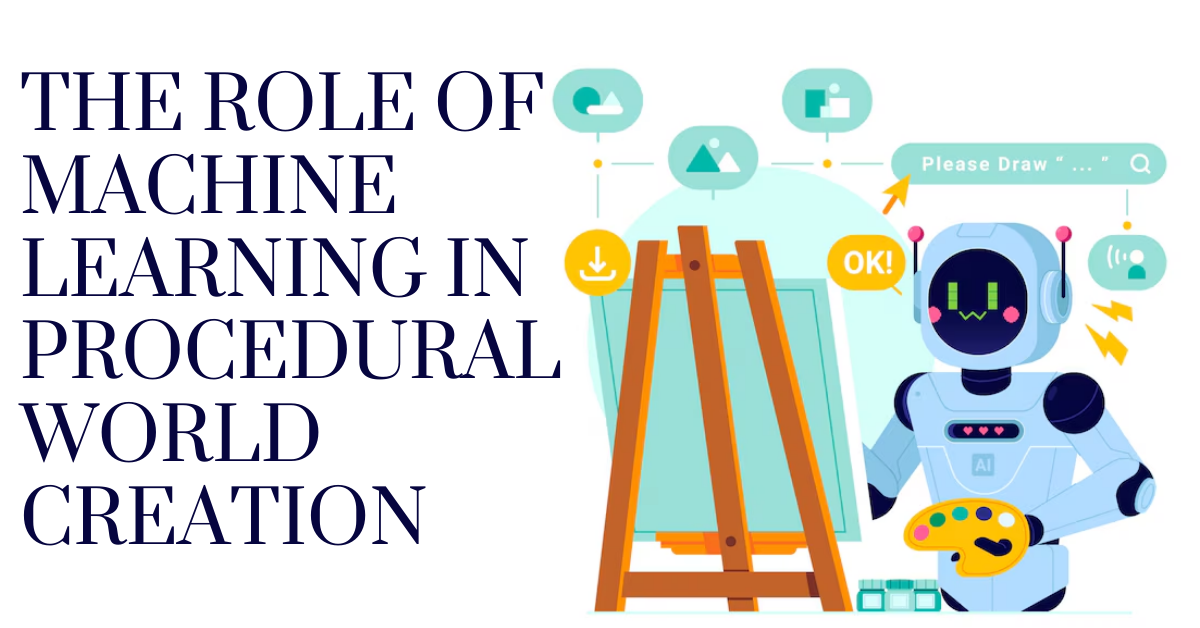The world of gaming has taken a turn with procedural world creation changing the way the world’s seen in games allowing for much dynamic and one off worlds for players to explore. In the past, we’ve generated these worlds algorithmically based on some fixed set of rules to make it appear random. Yet over this same period, machine learning (ML) and the technology it enabled brought procedural generation per se exponentially more up to speed. In this article, we’ll take you through how machine learning is shaping procedural world creation and what that means for game development going forward.
1. What is Procedural World Creation?
Procedural world creation is a method of world creation automatically without manual elaboration or design of every single element of the game world. That’s it, and it’s by doing so, it is possible to craft vast and varied worlds that would otherwise take too long or be impossible without being crafted by hand. In fact, lucky for us, procedural generation is the engine used in popular games like Minecraft and No Man’s Sky for building the enormous landscapes, planets or environments that you’ll be able to roam freely around without a worry as users will be crowdsourcing data into said games.
The Traditional Approach:
Traditionally, traditional does get you a branching set of rules and parameters, and then with that the computer would generate the world based on those rules. However, this implementation will result in repetition and predictability of the world at a bigger scale.
Mix Meets Machine Learning
The way the computer procedurally generates building shape is changing – it’s using machine learning, which is a sub category of artificial intelligence — it learns from data, adapts, and then makes decisions based on patterns. The kinds of complexity and creativity only traditional algorithms string us can’t give us.
How Machine Learning Enhances Procedural Generation:
Improved Natural Features: When ML tries to analyze real world data, it produces more realistic Real world data than the Real world. Can be compared. Machine: We can write, and with enough geological data to train on, models will reproduce the details of nature — provided you know.
Dynamic Ecosystems: Just as machine learning can create dynamic, reservoir ecosystems (ecosystem in which animals, plants and weather patterns interact and more ‘live’), so can machine learning. And with anything, they could adapt to changes in the environment in whatever wildlife they’ve experienced before, and make more richer, more immersive world of it.
Learning Player Preferences: Because ML algorithms can learn about which changes to the game world would result in a more personalized and more interesting game world, and then alter the environment accordingly, they can do a better job of learning about which changes are beneficial to the game, and then make those changes themselves.
3. Machine Learning applications for procedural world creation
One of the key advantages of machine learning (compared to traditional world generation methods in terms of complexity, variety and realism) is the reason why machine learning is so attractive.
Key Benefits:
Increased Variety: This follows, that not even in the case of the same ML model would any playthrough be the same in the scenario and landscape.
Adaptability: With this, game worlds become a time and space’ with things that are, that evolve, change on the fly as the player does.”
Realistic World-building: So we can have much more natural and more believable environments, in … pattern recognition data analysis to create weather system, vegetation, whatever.
And they offer worlds which feel alive and which are evolving to continue to develop the immersive value and the player engagement worth they offer.
Conclusion: Procedural World Creation: The Future
Machine learning wouldn’t just be more of the same, it would be everything you can ever do with game world realism, player engagement and game world diversity. In the realm of dynamic and evolving worlds, where the latest application of machine learning in procedural world generation is now used to generate dynamic and evolving environments, in dynamic and evolving ways. Games development benefits of machine learning can be large, but they need to be worked out. We keep discovering new things with every new bit of technology coming out, and when you play you are going to be playing worlds that are going to be more complicated, more immersive.
Now in the power of machine learning, the future of procedural world creation has never shone brighter or felt more exciting.

